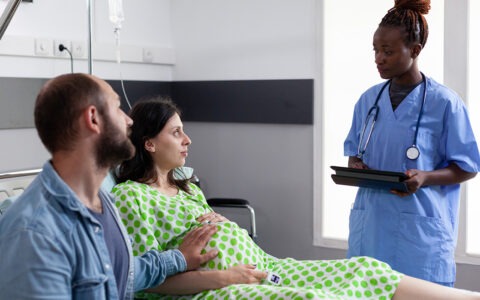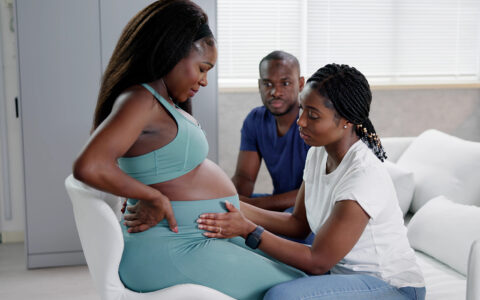Fetal risks associated with a Listeria monocytogenes infection – including prematurity, low birth weight, and death – are well-documented, yet health risks to that fetus’s birth parent have not been well-studied until now.
When researchers did recently assess outcomes for pregnant women with a Listeria infection, they found greatly increased risks for severe morbidity and mortality. The findings were recently published in the Journal of Maternal-Fetal and Neonatal Medicine.
“Pregnant patients who had a Listeria infection at the time of delivery had significantly increased risks, specifically related to sepsis and respiratory distress and being on a ventilator, compared to women who had a delivery and didn’t have Listeria,” said Jennifer Thompson, M.D., one of the paper’s co-authors, a specialist in high-risk pregnancy and an associate professor of obstetrics and gynecology at Vanderbilt University Medical Center.
More than 20-fold Rise
The research team identified 134 maternity hospitalizations involving Listeria; 72 of those were delivery admissions. A review of delivery admissions showed a higher rate of severe maternal morbidity among patients with Listeria, a significant difference of 30.9 percent for those with the infection versus 1.6 percent for those without.
“Women with Listeria ended up being at 21 times greater risk for severe morbidity when compared to those without Listeria,” Thompson said.
“We ought to consider Listeria more often than not in making our differential diagnosis.”
The paper’s findings only reflect patients admitted with Listeria who had a delivery during the illness. It did not reflect the experiences of pregnant patients who had a Listeria infection that resolved prior to delivery.
“Patients who had a self-limiting case might have had outcomes that were not as significant,” Thompson said.
Among the Most Vulnerable
According to the CDC, at least 90 percent of people who get Listeria infections are those who are pregnant, newborns, people 65 or older, or those with weakened immune systems. Approximately 1,600 people become ill from Listeria annually in the United States, and about 350 of them die.
During pregnancy, people are 10 times more likely to contract this infection. Pregnant Hispanic women are 24 times more likely than others to become ill from Listeria.
Treatment with antibiotics can be effective to protect both the expectant person and the fetus.
Causes of the Infection are Changing
The standard thinking about Listeria is that the greatest risk comes from consuming foods typically eaten uncooked, such as deli meats, cheeses and sprouts. However, the bacteria can also reside in foods that are seldom suspected, such as cantaloupe and celery. A hardy microorganism, Listeria can thrive at refrigerator temperatures and hide on equipment in factories and grocery stores.
“The foods we have generally thought of as putting you at risk are not the ones we are seeing in many of the more recent outbreaks,” Thompson said. Instead of cold cuts and soft cheeses, illnesses have been resulting from the consumption of prepackaged foods, such as hummus, salads and other items not traditionally associated with Listeria, she said.
Ready-to-eat Foods Involved
Prior to 2000, compliance with today’s CDC guidelines involved avoiding six categories of food to prevent all listeriosis outbreaks. But 15 years later, only 5 percent of confirmed listeriosis outbreaks could be tracked back to those six food groups, one study found
“It’s harder to tell people to avoid all kinds of prepackaged foods, which make the situation a little more unnerving. Knowing whether or not you were exposed can be hard,” Thompson said.
Tricky to Diagnose
“The hard thing about Listeria is that we just don’t have a great test for it. It’s not like the flu or COVID, where you can use a swab and get a quick determination,” Thompson said. At present, the diagnosis is made based on blood cultures, some of which are not well validated.
Work continues to find better tests for Listeria, but there’s not much commercial steam behind the efforts because Listeria numbers are relatively low, she explained.
“Right now, it’s not one of the first diagnoses we often consider, unless there’s been an outbreak and someone says they ingested those specific foods,” Thompson said.
“If a pregnant patient comes in with typical Listeria symptoms, which include nausea, vomiting, and diarrhea, we ought to consider Listeria more often than not in making our differential diagnosis.”





